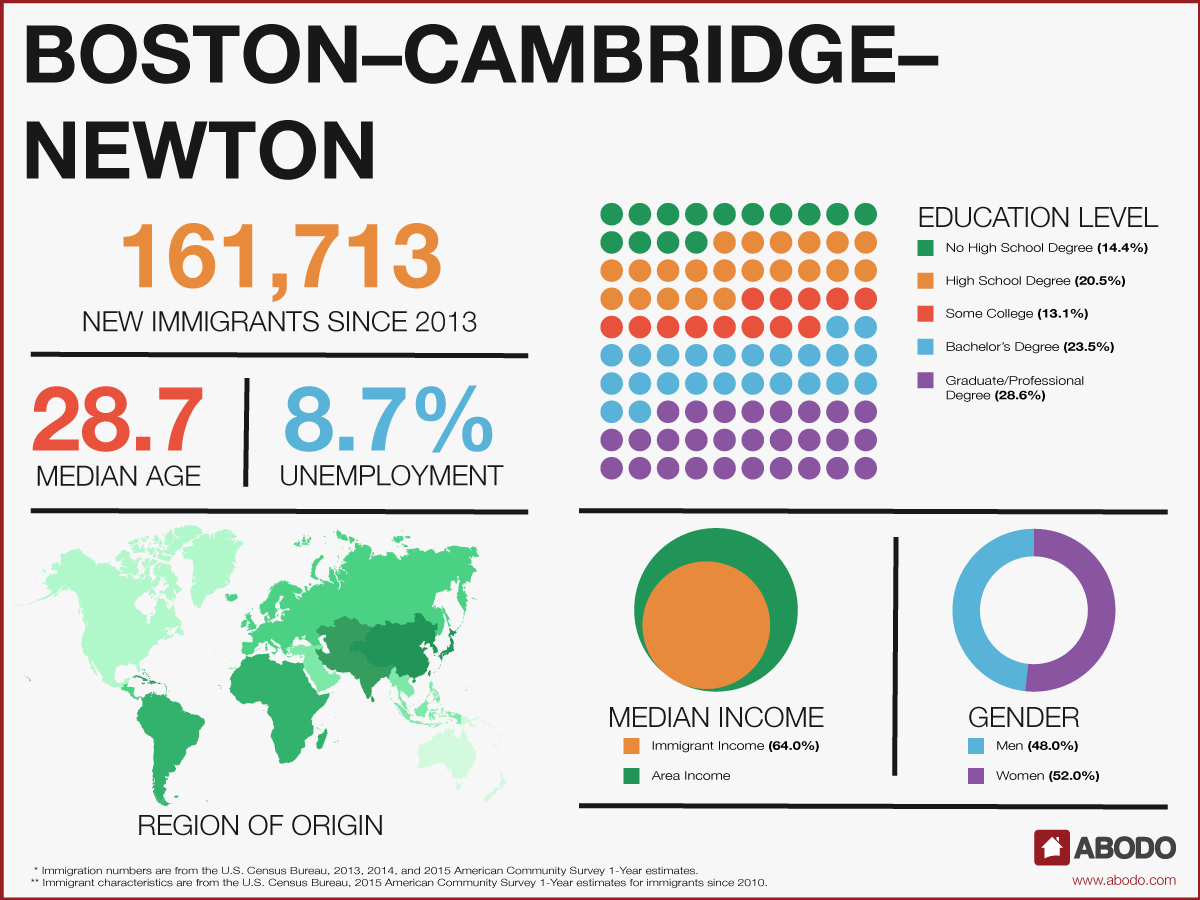Boston Is Among Top 8 Immigrant-Friendly Cities

Image via Adobo
Boston’s colleges are drawing students from around the world and shaping a uniquely diverse population of immigrants in the city, according to the findings of a new study, which also placed the Hub on a list of the top 8 most welcoming metropolitan areas for new arrivals.
Adobo, an apartment-hunting service, says it analyzed data from U.S. Census American Community Survey to reach its conclusions, and the data includes both immigrants with and without documentation. The city—as well as an area that includes Cambridge, Somerville, Newton and some suburbs—has seen more than 150,000 new immigrants since 2013, Adobo found.
That population, drawn to the area by the region’s famed colleges, is among the best-educated immigrants in the nation (and most likely to be currently enrolled in college), and also among the most diverse, with a “uniquely wide distribution” of national origins. Of recent arrivals, 17.4 percent came from Eastern Asia, 13.3 percent from the Caribbean, 13 percent from South Central Asia, 11.7 percent from South America, and 10.5 percent from Africa.
Perhaps not surprisingly in a city that also has the country’s most stark income inequality, new immigrants on average make 64 percent of the area’s median income—the “poorest earning ratio on the list” among Adobo’s top eight, it says.
Also on the top eight list were New York, Los Angeles, Miami, Houston, Chicago, San Francisco, and Washington, D.C.
The company, which makes no secret of its concerns about a Donald Trump presidency (it mentions the president-elect by name), says it wants to use its report, and an accompanying package of shareable charts it produced, to offer a clearer picture of what the immigrant community looks like.
“We hear it all the time from history professors and politicians alike: The United States is a nation of immigrants, with everyone but Native Americans having an ancestor to thank for taking the leap and migrating to America. And as time goes on, barring any major restrictive reforms, that will only become more true,” Adobo writes on its website, adding, “And as the data we’ve sifted through here shows, the majority of new immigrants to the United States are employed, educated, and eager to contribute to both the culture and the economy of their new home. There’s no reason why the land of opportunity shouldn’t continue to welcome them with open arms.”
Boston politicians have their own concerns about Trump, and have their own ideas about just how welcoming the state should be. “We will not stop being a city that values and respects immigrants, both documented and undocumented,” Mayor Marty Walsh said shortly after the election. The city already has significant protections for undocumented immigrants, but advocates at both the city and state level have called for something more: full-stop adoption of the policies of a so-called “sanctuary city,” the term used to describe a policy of refusing to cooperate with efforts to deport people who are here illegally.

